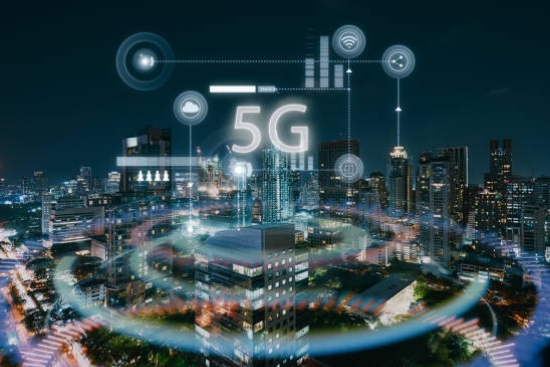
5G, or the fifth-generation mobile network, represents the next leap in mobile communication technology. It builds on the foundation laid by previous generations (1G to 4G)
but introduces significant advancements that have the potential to revolutionize various aspects of society, technology, and industry.








Key Features of 5G
Ultra-Fast Speeds
Increased Data Rates: 5G offers speeds up to 100 times faster than 4G LTE, with potential peak data rates of up to 20 Gbps. This makes activities like downloading large files, streaming high-definition video, and gaming incredibly fast and seamless.
Low Latency: The latency in 5G networks can be as low as 1 millisecond, enabling near-instantaneous communication between devices. This is crucial for applications that require real-time interaction, such as autonomous vehicles, remote surgeries, and industrial automation.
Massive Connectivity
Internet of Things (IoT): 5G can support a vastly greater number of connected devices per square kilometer than 4G. This is essential for the growth of IoT, where billions of devices—ranging from smart home gadgets to industrial sensors—need to be interconnected and managed.
Network Slicing: 5G networks can be divided into multiple virtual networks that can be customized for specific applications or services, such as prioritizing emergency services over regular traffic during a crisis.
Enhanced Capacity and Efficiency
Greater Bandwidth: 5G networks utilize a wider range of frequencies, including millimeter waves, which allows for more data to be transmitted simultaneously. This increases the network’s overall capacity and efficiency, reducing congestion even in densely populated areas.
Energy Efficiency: 5G is designed to be more energy-efficient, which is beneficial not only for extending the battery life of mobile devices but also for reducing the overall carbon footprint of network operations.
Improved Coverage and Reliability
Diverse Spectrum Use: 5G can operate on multiple frequency bands, from low-band frequencies that cover large areas to high-band frequencies (mmWave) that offer high speeds in localized zones. This flexibility ensures better coverage and more reliable connections, even in challenging environments.
Advanced Antenna Technology: 5G employs technologies like Massive MIMO (Multiple Input, Multiple Output) and beamforming, which focus signals directly to users rather than broadcasting them widely. This increases both the range and reliability of the network.
Impacts of 5G on Industry and Society
Smart Cities
Infrastructure: 5G enables smart city initiatives by providing the necessary connectivity for intelligent infrastructure, including traffic management systems, energy grids, and public safety networks.
Public Services: Enhanced connectivity allows for real-time monitoring and management of public services, leading to improved efficiency, reduced costs, and better service delivery to citizens.
Healthcare
Telemedicine: 5G enhances telemedicine by enabling high-quality video consultations and remote patient monitoring, even in areas with limited infrastructure.
Remote Surgery: The low latency of 5G is critical for remote surgical procedures, where real-time control and feedback are essential.
Autonomous Vehicles
Vehicle-to-Everything (V2X) Communication: 5G supports V2X communication, allowing vehicles to communicate with each other and with traffic infrastructure. This is key to the development of safe and efficient autonomous driving systems.
Traffic Management: Real-time data from autonomous vehicles can be used to optimize traffic flow, reduce congestion, and improve overall road safety.
Entertainment and Media
Immersive Experiences: 5G enables new forms of entertainment, such as augmented reality (AR) and virtual reality (VR), with higher quality and lower latency, providing more immersive user experiences.
Content Delivery: With faster speeds and lower latency, streaming services can offer higher resolution content, including 4K and 8K video, with minimal buffering.
Industry 4.0
Automation: 5G supports advanced automation in manufacturing and logistics, where real-time communication between machines and systems is essential for optimizing production and supply chains.
Remote Operations: Industries like mining and oil exploration can benefit from 5G’s ability to support remote operations, allowing for safer and more efficient management of hazardous environments.
Conclusion
5G is not just an incremental upgrade from previous mobile networks; it represents a transformative technology that will impact nearly every aspect of our lives. Its combination of ultra-fast speeds, low latency, massive connectivity, and high reliability will drive the next wave of innovation, enabling new applications and services that were previously unimaginable. As 5G continues to roll out globally, its full potential will become increasingly apparent, paving the way for a more connected, efficient, and intelligent world.

Leave a Reply